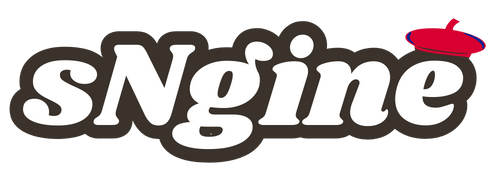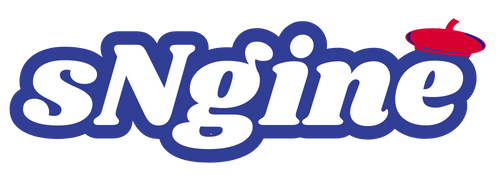Advanced Virtual Medical Scribe Solutions for Modern Care
As healthcare shifts toward more efficient, patient-first workflows, providers are increasingly turning to virtual medical scribe services to manage documentation burdens. Modern medical practices face heavier administrative requirements than ever before. EHR updates, compliance-driven documentation, long patient charts, and follow-up notes take valuable time away from meaningful patient interaction. A virtual medical scribe offers a solution that helps clinicians regain control of their day and improve productivity without compromising accuracy.
This article explores how a virtual medical scribe service, combined with reliable medical transcription support, can transform the way physicians document clinical encounters. We will also examine the role of virtual medical transcription, the value of professional medical transcription services, and why outsourcing medical scribe services can significantly elevate operational efficiency.
The Growing Demand for Virtual Documentation Support
Doctors today spend nearly twice as much time on paperwork as they do with patients. This imbalance contributes to burnout, decreased job satisfaction, and reduced clinical efficiency.
A virtual medical scribe enters this ecosystem as a highly trained professional who manages all aspects of real-time or asynchronous documentation. Unlike an in-person scribe, a virtual scribe works remotely using encrypted communication tools, EHR access, and HIPAA-compliant technology.
As a result, clinics of all sizes—from solo practices to large health systems—are embracing virtual medical scribe services to streamline their workflows, improve chart accuracy, and reduce administrative pressure.
How Virtual Medical Scribe Services Support Clinical Workflows
Every healthcare provider has unique documentation habits, which is why a quality virtual medical scribe service offers adaptable solutions. Here’s how these services strengthen clinical operations:
1. Real-Time Chart Completion
Virtual scribes listen to the clinical encounter—live or via recorded audio—and prepare:
-
HPI
-
ROS
-
Past medical history
-
Assessment notes
-
Treatment plans
-
Procedure notes
By the time the physician finishes the patient encounter, much of the chart is already complete.
2. Reduced After-Hours Work
Instead of spending evenings finalizing documentation, clinicians can review and sign off charts prepared by the scribe.
3. Improved Accuracy and Consistency
Virtual scribes specialize in clinical terminology, compliance guidelines, and efficient EHR navigation. Their work eliminates common documentation gaps and ensures that medical charts meet regulatory standards.
4. Support for Any Specialty
Virtual medical scribe services can be tailored to:
-
Primary care
-
Cardiology
-
Orthopedics
-
Emergency care
-
Mental health
-
Dermatology
-
Pain management
-
Surgical practices
This flexibility makes them valuable across a wide spectrum of healthcare settings.
Enhancing Documentation with Medical Transcription Services
While scribes complete structured charting, medical transcription services convert dictations into accurate, formatted documentation.
Many practices choose to combine a virtual medical scribe with medical transcription support. Here’s why:
1. Ideal for Providers Who Prefer Dictation
Some physicians prefer to dictate their notes instead of having them transcribed during the encounter. Transcription specialists take these recordings and turn them into complete, accurate documents.
2. Ensures Precision in Complex Cases
Specialties like neurosurgery, oncology, and cardiology often require detailed, structured dictations. High-quality transcription ensures accuracy that supports clinical decisions.
3. Reduces EHR Navigation Time
Doctors who find EHR systems slow or overwhelming can rely on transcriptionists to handle much of the documentation.
What Is Virtual Medical Transcription?
Virtual medical transcription is a remote service where trained transcriptionists convert recorded voice notes into structured medical documentation. This system is ideal when:
-
Providers want to capture thoughts quickly.
-
Encounters involve complex cases.
-
Dictation must be converted into standardized formats.
Virtual medical transcription integrates easily with EHR platforms, allowing documents to be reviewed and uploaded with minimal effort.
Comparing Virtual Medical Scribe Services and Medical Transcription
Below is a table showing the differences and benefits of each service:
| Feature | Virtual Medical Scribe Services | Medical Transcription Services |
|---|---|---|
| Documentation Type | Real-time charting | Post-visit dictation-to-text |
| Interaction Level | Live support or recorded session review | Dictation-based |
| EHR Integration | Direct entry into EHR | Document inserted or uploaded |
| Best For | High patient volume, real-time workflows | Specialists who prefer dictating |
| Turnaround | Instant or same-day | Same-day to 24 hours |
| Primary Benefit | Reduces clinician workload during visits | Ensures highly accurate narrative documentation |
Both solutions offer significant value. Many practices use them together for maximum flexibility.
Why Medical Practices Choose Virtual Scribe Solutions
1. More Time for Patient Care
With documentation handled externally, physicians can focus their attention on listening, diagnosing, and building rapport with patients.
2. Increased Revenue Potential
Completing charts quickly and accurately enables:
-
More patients per day
-
Fewer billing errors
-
Cleaner claims due to accurate coding
3. Lower Staff Costs
Hiring an in-house scribe requires salaries, training, workspace, and HR management. A virtual medical scribe service eliminates these overhead costs.
4. Better Work–Life Balance
Physicians reclaim hours previously spent on charting after clinic hours.
5. Efficient Multitasking
Virtual scribes can also handle:
-
Updating patient histories
-
Preparing referral documentation
-
Managing structured templates
-
Entering orders (depending on policy)
How Virtual Medical Scribe Services Work
Although every provider has a different workflow, the process typically follows these steps:
Step 1: Provider Connects with the Scribe
Connection can be made through:
-
Secure teleconferencing
-
Encrypted audio channels
-
Pre-recorded encounters
Step 2: The Scribe Completes Real-Time Documentation
The virtual medical scribe listens, observes, and documents everything in the EHR.
Step 3: Provider Reviews and Signs Off
The physician checks for accuracy and finalizes notes.
Step 4: Optional Medical Transcription Support
For providers who record dictations, transcriptionists convert audio files into structured documentation.
This workflow ensures smooth and efficient charting with minimal effort from the provider.
Benefits of Virtual Medical Transcription Integration
Adding virtual medical transcription into a scribe-supported workflow provides:
-
Faster note completion
-
Additional accuracy layers
-
Clearer documentation for complex procedures
-
Enhanced billing documentation for coders
Providers who combine both services often experience significant reductions in administrative hours.
Choosing the Right Medical Scribe Services for Your Practice
When selecting professional medical scribe services, consider the following factors:
1. HIPAA Compliance
The provider must use secure communication channels and implement strict privacy measures.
2. Specialty Expertise
A scribe should understand your specialty’s terminology, workflows, and documentation needs.
3. Flexible Coverage
Look for services that offer:
-
Live scribes
-
Asynchronous scribes
-
Hybrid transcription + scribe models
4. EHR Compatibility
Your virtual medical scribe must be fully capable of working within your preferred EHR system.
5. Cost-Effectiveness
The right service balances quality with affordability to deliver optimal ROI.
Frequently Asked Questions (FAQs)
1. What is a virtual medical scribe?
A virtual medical scribe is a trained documentation specialist who remotely completes patient charts, clinical notes, and EHR entries during or after medical encounters.
2. How do virtual medical scribe services help physicians?
They reduce documentation workload, improve accuracy, save time, and allow physicians to focus more on patient care.
3. Are medical transcription services different from scribe services?
Yes. Scribes complete real-time charting, while medical transcription services convert recorded dictations into written notes.
4. What is virtual medical transcription?
It is a remote transcription service where voice recordings from healthcare providers are converted into structured medical documents.
5. Is it safe to use a virtual medical scribe service?
Yes—reputable services follow strict HIPAA compliance, secure communication protocols, and encrypted technology.
6. Can virtual scribes work with any EHR system?
Most professional scribes are trained to operate multiple major EHR platforms, making integration seamless.



